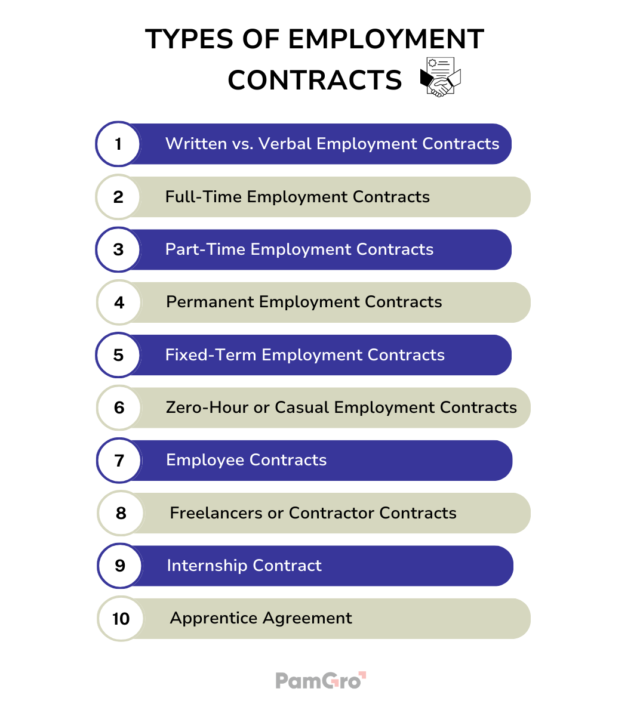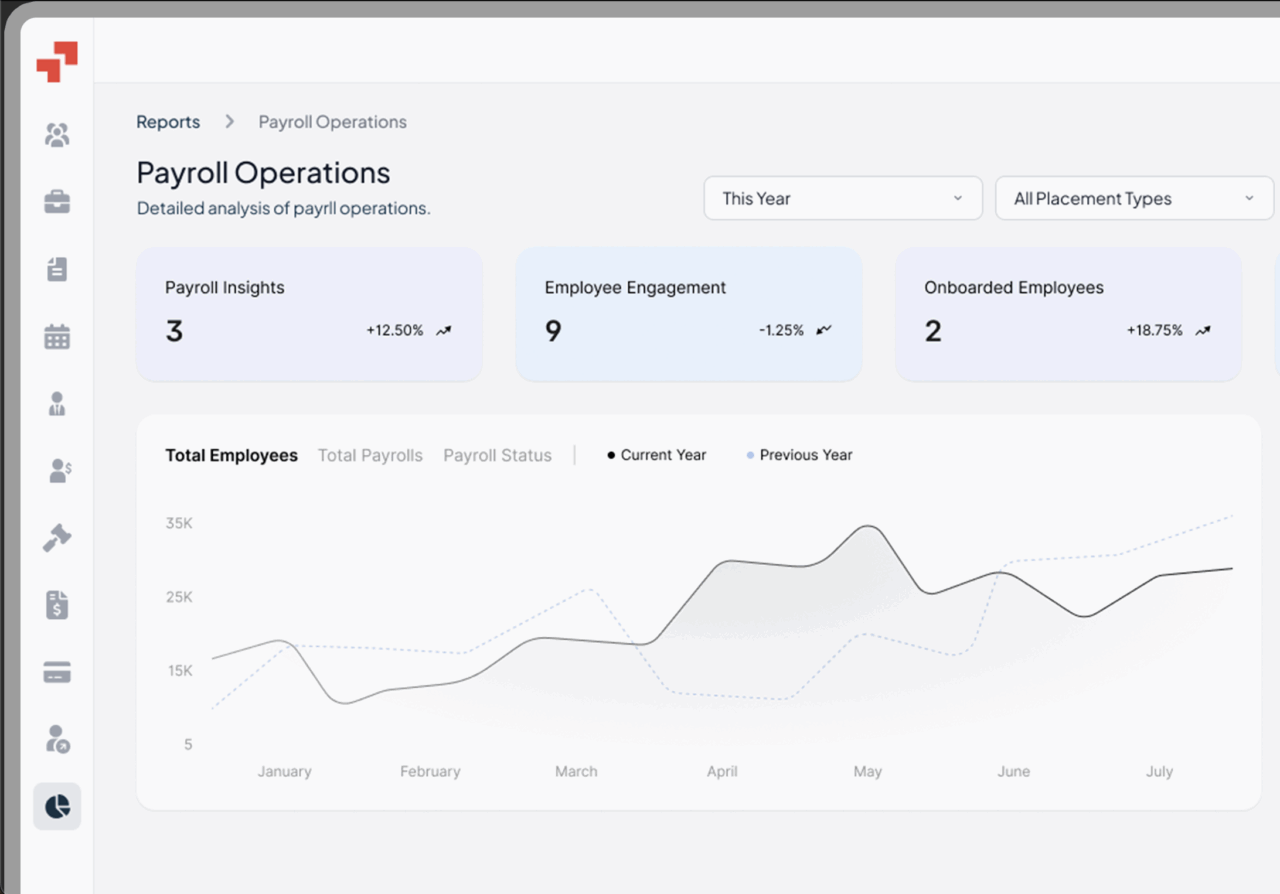When it comes to hiring employees, one of the most crucial aspects is establishing the terms of the employment relationship through an employment contract.
As an Employer of Record (EOR) service provider, we understand that navigating the various types of employment contracts can be complex, especially when operating across different countries and jurisdictions.
HR professionals play a vital role in hiring and contracting employees, strategically defining the most suitable types of employment contracts. They must consider the contract duration and pay to manage resources efficiently. Read on to explore the types of employment contracts in the UK.
What is an Employment Contract?
An employment contract outlines the rights, responsibilities, and obligations of both the employer and the employee, providing a clear framework for the working relationship.
It serves as a legally binding document, defining the rights, responsibilities, and expectations of both parties. Though usually written in a legally binding document, it can also exist verbally, though written contracts offer greater protection and clarity.
Key elements typically included in an employment contract:
- Job title and description: Clearly defines the employee’s role and responsibilities.
- Compensation: Salary, bonuses, commissions, and other forms of pay.
- Benefits: Health insurance, paid time off, retirement plans, etc.
- Work hours and schedule: Regular work hours, overtime policies, and shift work arrangements.
- Duration of employment: Whether it’s a permanent, temporary, or contract position.
- Termination clause: Outlines conditions for ending the employment relationship.
- Confidentiality and non-compete clauses: Protects the employer’s sensitive information.
- Dispute resolution: Specifies how disagreements will be handled.
It’s important to note that employment laws vary by location, so it’s advisable to consult with legal counsel to ensure the contract complies with all applicable regulations.
Types of Employment Contracts

1. Written Contract vs. Verbal Employment Contracts
A written employment contract is a formal document that outlines the terms and conditions of the employment relationship. It is typically signed by both the employer and the employee and sets out the rights, responsibilities, and obligations of each party.
Written statements provide a clear understanding of the expectations and requirements of the job and can help protect both the employer and the employee in the event of any disputes. They cover various aspects, including job duties, compensation, working hours, benefits, confidentiality, and termination procedures. Written agreements are common in most countries and are generally recommended as they provide a clear record of the agreement between the parties.
Verbal employment contracts, on the other hand, are based on a spoken agreement between the employer and employee. While they may not be as common as written contracts, verbal contracts can still be valid and enforceable in many jurisdictions.
However, it is important to note that verbal contracts can be more challenging to enforce, as the specific terms and conditions may be difficult to prove in the event of a dispute. Therefore, it is generally advisable to put the contracts agreed terms of employment in writing to ensure clarity and protect the interests of both parties.
2. Full-Time Employment Contracts
The most common type of employment contract is a full-time contract. Full-time contracts typically involve a standard number of working hours per week, usually ranging from 35 to 40 hours, depending on the country and industry norms.
These contracts are suitable for positions that require a consistent and dedicated presence in the workplace. Full-time employees in permanent positions often receive a comprehensive benefits package, including health insurance, paid time off, and other perks.
3. Part-Time Employment Contracts
Part-time employment contracts involve working fewer hours than a full-time position, usually less than 35 hours per week. These contracts offer flexibility for both employers and employees, allowing for a reduced work schedule.
Part-time employees may receive prorated benefits, such as paid time off, and are often entitled to the same rights and protections as their full-time counterparts.
4. Permanent Employment Contracts
Permanent or indefinite employment contracts do not have a fixed end date and are intended to provide long-term employment. These tend to be for full- and part-time roles and are given to employees who will work regular hours for their employer. This permanent employment contract status covers both salaried or agency workers and those paid on an hourly rate, which continues until the point at which the employee leaves the company.
With a permanent employee contract, employees typically receive guaranteed wages, benefits, and other entitlements, such as vacation leave, paid holiday, and statutory sick pay. Employers often use these contracts to retain talent, reduce recruitment costs, and increase employee loyalty and performance.
5. Fixed-Term Employment Contracts
Fixed-term contracts or definitive employment contracts specify a predetermined end date or a specific duration for the employment relationship. These contracts are often used for temporary positions, projects with a defined timeline, or when there is uncertainty about long-term funding or business needs.
Fixed-term contracts provide a clear end date, and employers are not obliged to extend the contract beyond the specified term. However, in some jurisdictions, employees on fixed term contract may be entitled to certain protections, such as the right to be treated similarly to permanent employees.
6. Zero-hour or Casual Employment Contracts
Zero-hours contracts, also known as casual employment contracts, do not guarantee a minimum number of working hours. These contracts provide flexibility for employers to call upon workers as needed, and employees are typically not obliged to accept work when offered.
Zero-hour contracts are often used in industries with fluctuating demand, such as retail or hospitality. However, it is important to note that in some jurisdictions, these contracts may be subject to specific regulations to protect workers’ rights.
However, zero-hour workers are entitled to the same annual leave as permanent employees, and their employer must pay them a minimum wage or at least the National Minimum Wage for their work.
Related read: What is Zero Hours Contracts?
7. Employee Contracts
Employee contracts establish an employer-employee relationship, where the employer has a higher degree of control over the work performed and the working conditions. Employees typically work exclusively for the employer and are entitled to a range of benefits and protections, including statutory employment rights such as minimum wage, overtime pay, sick leave, and unemployment benefits. Employee contracts are common in traditional employment relationships.
8. Freelancers or Independent Contractor Contracts
Contractor or independent contractor contracts, on the other hand, establish a different type of working relationship. Contractors are typically self-employed individuals who provide services to a client or company on a project or specific task.
They have more autonomy and control over how they perform their work and, as self-employed contractors, are generally not entitled to the same benefits and protections as employees. Contractor contracts are common in the gig economy or freelance work arrangements.
9. Internship Contract
An internship contract is a mutually beneficial agreement between an intern (typically a student providing the labor) and an employer, where the intern gains skills, training, and exposure to a field.
Internships are designed to support learning experiences, are short-term in nature, and can be either paid or unpaid.
Although this contract has a start and end date, it is different from other short-term employment contracts (like temporary employment contract or fixed-term agreements) because it is intended for the worker to acquire skills and build connections during the engagement, primarily targeting students.
Internship contracts also differ from fixed-term contracts in that interns generally do not qualify for benefits if they work less than 120 days.
10. Apprentice Agreement
Companies use an apprenticeship agreement when providing training opportunities for individuals to develop or acquire new skills. This agreement outlines the apprentice’s rights and obligations, as well as the specifics of the training related to the skills, trade, or occupation.
An apprentice is not considered an employee but is someone engaged in learning a trade and employed for a set period as part of the employer’s apprenticeship program.
Get The Ultimate Playbook for US Tech Startups Looking to Expand in Europe
Europe awaits. But compliance, hiring, & market fit?
PamGro’s got you covered.

Global Employment Contracts: 4 Challenges and Best Practices
Operating in a global environment presents unique challenges:
- Standardization vs. Localization: Balancing the need for consistent contract terms with the requirement to adapt to local laws and customs.
- Language Barriers: Ensuring clear communication through accurate translations and cultural sensitivity.
- Data Privacy: Protecting employee data in accordance with different data protection regulations.
- Termination and Severance: Understanding termination procedures and severance pay requirements in different jurisdictions.
Best practices for global employment contracts include:
- Seek Legal Counsel: Consult with employment lawyers in each country to ensure compliance.
- Centralized Contract Management: Use a standardized contract template while incorporating country-specific clauses.
- Regular Reviews: Update contracts to reflect changes in labor laws and business needs.
- Employee Training: Provide employees with clear explanations of their contract terms and rights.
Crafting effective employment contracts is vital for managing employee relationships and mitigating legal risks. By understanding the different types of employment contract, considering the specific needs of your business, and complying with local laws, employers can create contracts that protect their interests while fostering a positive work environment.
Customer Success Story
Discover how Pamgro’s Expertise helped a recruiting company for a seamless cross-border expansion across the UK and Netherlands
Understanding the Right Contract Option For You
PamGro is a leading global Employer of Record (EOR) specializing in simplifying complex employment solutions. With a proven track record of success spanning over 17 years, PamGro has processed $5 Billion worth of payments and built a robust network across 45+ countries. Trusted by 70+ SMEs and corporates worldwide, we offer comprehensive solutions for businesses seeking to expand globally while ensuring compliance with local labor laws and regulations.
Our EOR services provide a seamless experience for employers, handling payroll, benefits, taxes, and HR administration, allowing businesses to focus on their core competencies.
FAQs
1. What are the different employment contract types?
Various employment contracts include both permanent contracts and temporary contracts, employment contracts and internship contracts, as well as apprentice agreements and freelance contracts.
2. What is a full time contract and part-time contract?
A full-time employment contract defines how long an individual is allowed to work and his or her salary. Full-time contracts can last 35 hours or longer (extendable link). Under UK legislation, employees can only work 48hrs a week unless they specify otherwise in their employment contract itself.
Part time contracts are the same as full-time contracts but have the major differences in hours. A part-time employee is not able to work more than 40 hours a week. In the agreement an agreement must indicate a weekly work schedule, the time is outlined in the contract.
3. Why are Employment Contracts important?
Employment contracts safeguard the company from risks related to termination, liability, or legal risk for confidentiality breaches if the hired party fails to fulfill their documented responsibilities or meet expectations. They also help businesses adhere to federal and local regulations and clearly outline employee roles and expectations.
Hire, Classify, and Pay Contractors - All in One Platform







